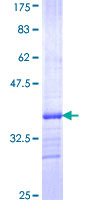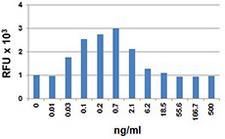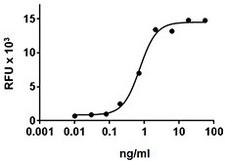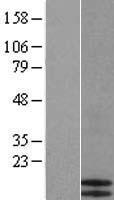order histories, retained contact details for faster checkout, review submissions, and special promotions.
Forgot password?
order histories, retained contact details for faster checkout, review submissions, and special promotions.
Locations
Orders Processing,
Shipping & Receiving,
Warehouse
2 Shaker Rd Suites
B001/B101
Shirley, MA 01464
Production Lab
Floor 6, Suite 620
20700 44th Avenue W
Lynnwood, WA 98036
Telephone Numbers
Tel: +1 (206) 374-1102
Fax: +1 (206) 577-4565
Contact Us
Additional Contact Details
order histories, retained contact details for faster checkout, review submissions, and special promotions.
Forgot password?
order histories, retained contact details for faster checkout, review submissions, and special promotions.
CCL17 / TARC
chemokine (C-C motif) ligand 17
This antimicrobial gene is one of several Cys-Cys (CC) cytokine genes clustered on the q arm of chromosome 16. Cytokines are a family of secreted proteins involved in immunoregulatory and inflammatory processes. The CC cytokines are proteins characterized by two adjacent cysteines. The cytokine encoded by this gene displays chemotactic activity for T lymphocytes, but not monocytes or granulocytes. The product of this gene binds to chemokine receptors CCR4 and CCR8. This chemokine plays important roles in T cell development in thymus as well as in trafficking and activation of mature T cells.
| Gene Name: | chemokine (C-C motif) ligand 17 |
| Family/Subfamily: | Intercrine , Intercrine beta |
| Synonyms: | CCL17, A-152E5.3, C-C motif chemokine 17, CC chemokine abcd-2, ABCD-2, SCYA17, T cell-directed CC chemokine, TARC, CC chemokine TARC, Small-inducible cytokine A17 |
| Target Sequences: | NM_002987 NP_002978.1 Q92583 |
Publications (1)












If you do not find the reagent or information you require, please contact Customer.Support@LSBio.com to inquire about additional products in development.









